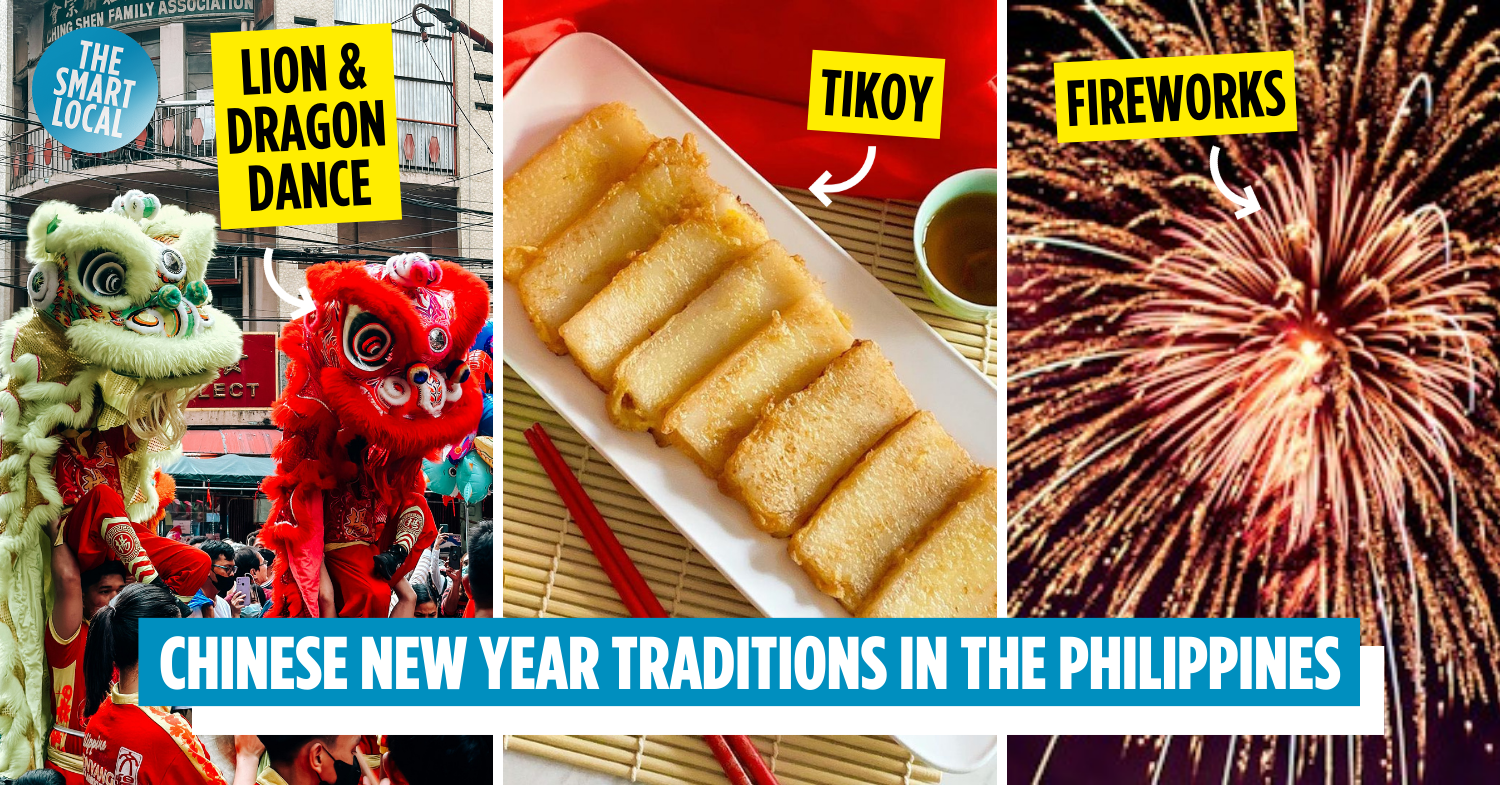Chinese New Year traditions in the Philippines
Many of us Filipinos celebrate Chinese New Year – be it because we’re Filipino-Chinese or we know someone who is. As one of the most auspicious occasions of the month, it’s hard not to join in the revelry of gatherings, fireworks, and lion dances.
If you’re planning to go to Binondo to check out the sights or celebrate with your Filipino-Chinese friends, here are 8 Chinese New Year traditions in the Philippines to familiarize yourself with so you can join in the celebration the right way.
Table of Contents
- Chinese New Year traditions in the Philippines
- 1. Lion and dragon dance – signals roaring beginnings
- 2. Ang pao – giving and receiving red envelopes for prosperity
- 3. Tikoy – sweet treats for unity and fortune
- 4. Prosperity toss – toss higher for better blessings
- 5. Golden fruit tray – fruits for good fortune
- 6. Firecrackers and fireworks – light show to keep the bad spirits away
- 7. Reunion dinner – abundance feast with the family
- 8. New Year markets – from good luck charms to Chinese snacks
- Chinese New Year traditions in the Philippines you need to know
1. Lion and dragon dance – signals roaring beginnings
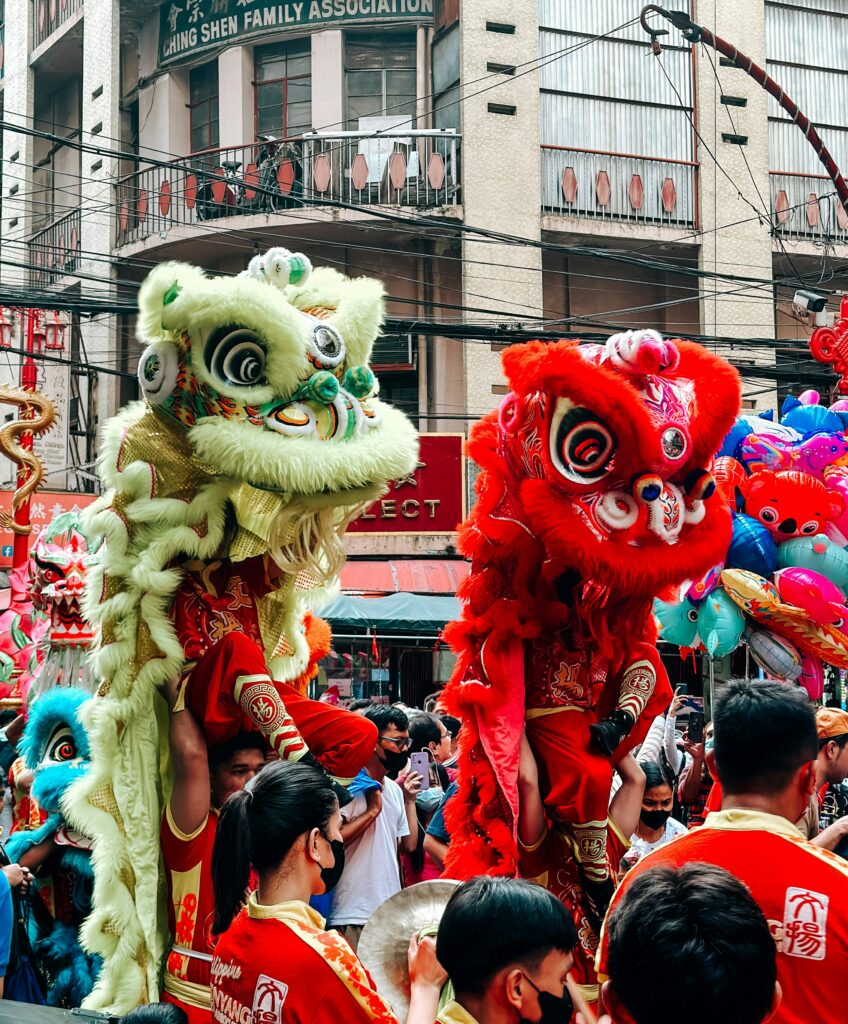
Image credit: SJ via Unsplash
The Lion and Dragon Dance is a fun and festive kick-off for the Chinese New Year celebrations across the Philippines. With the rhythmic beat of drums and cymbals, performers dressed as lions or dragons dance through the streets. It symbolizes luck and prosperity while keeping the evil spirits at bay for new beginnings.
In modern times, you’ll see this tradition evolve into elaborate performances attracting locals and tourists alike. So don’t be surprised if you suddenly hear the drums and see mascots in lion and dragon costumes when you go to the mall and restaurants during the Chinese New Year.
2. Ang pao – giving and receiving red envelopes for prosperity
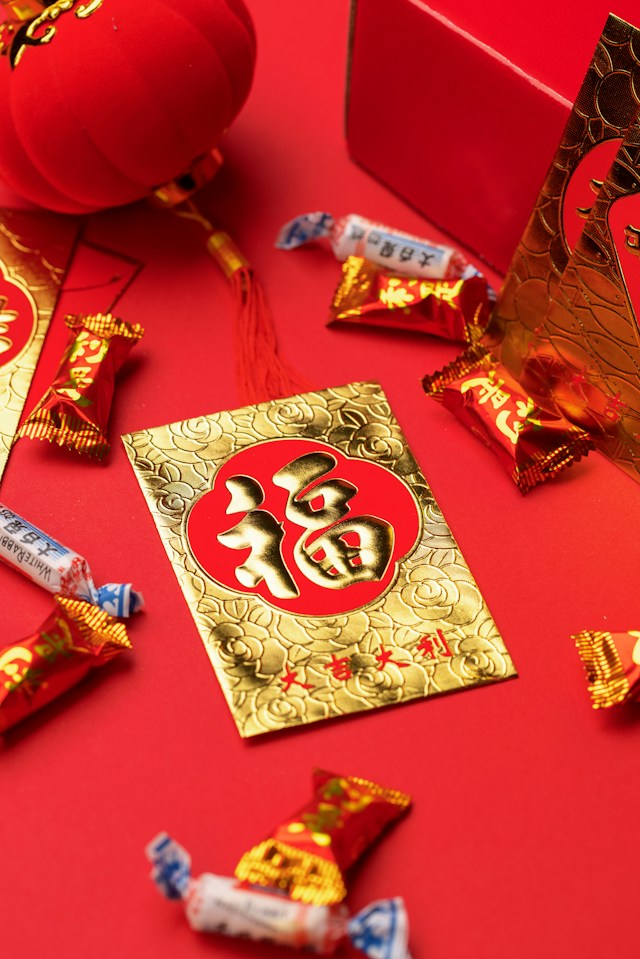
Image credit: Jason Leung via Unsplash
Ang pao, or red envelopes filled with money, are exchanged during Chinese New Year as a symbol of good luck and prosperity. In Filipino-Chinese households, elders give these envelopes to younger family members, symbolizing blessings for the coming year. And get this – instead of quiet thank yous, the more squeaky excitement you muster while receiving ang pao, the better
Today, even the ang pao game has become strong. People come up with creative designs and personalized messages adding a modern twist to this ancient practice.
3. Tikoy – sweet treats for unity and fortune
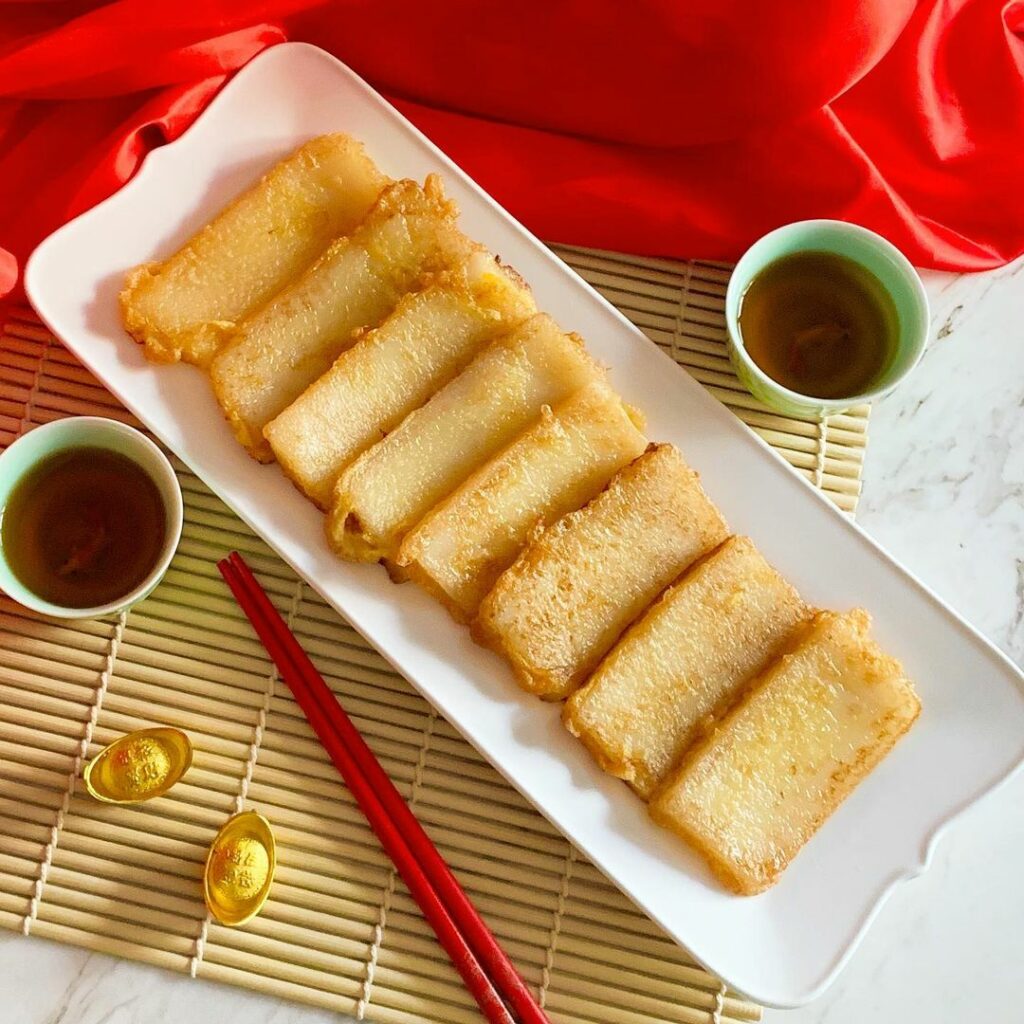 Image credit: @chinagoldtikoy via Instagram
Image credit: @chinagoldtikoy via Instagram
Tikoy, or Nian Gao, is a sticky rice cake traditionally eaten during Chinese New Year for its symbolism of prosperity and unity. It comes from the Hokkien words “tik” (sweet) and “koy” (cake), the sweetness of this delicacy is believed to spread good vibes and good fortune to everyone in the family.
Despite its traditional roots, Tikoy has also adapted to modern times. You’ll find Tikoy in various flavors from Ube to Pandan and presentations, appealing to new tastes while maintaining its cultural significance.
4. Prosperity toss – toss higher for better blessings
Video credit: Rappler via YouTube
The Prosperity Toss, also known as Yu Sheng, is a unique Chinese tradition where a salad of raw fish and vegetables, with condiments is tossed together while shouting your hopes and wishes for the new year. Doing this ritual symbolizes abundance, good fortune, and spreading prosperity among everyone, may it be your family, friends, or even workmates. The higher and stronger the toss, the more bountiful your blessings for the year.
In recent years, the Prosperity Toss has gained popularity in Chinese restaurants, offering diners an interactive and festive way to celebrate the New Year.
5. Golden fruit tray – fruits for good fortune
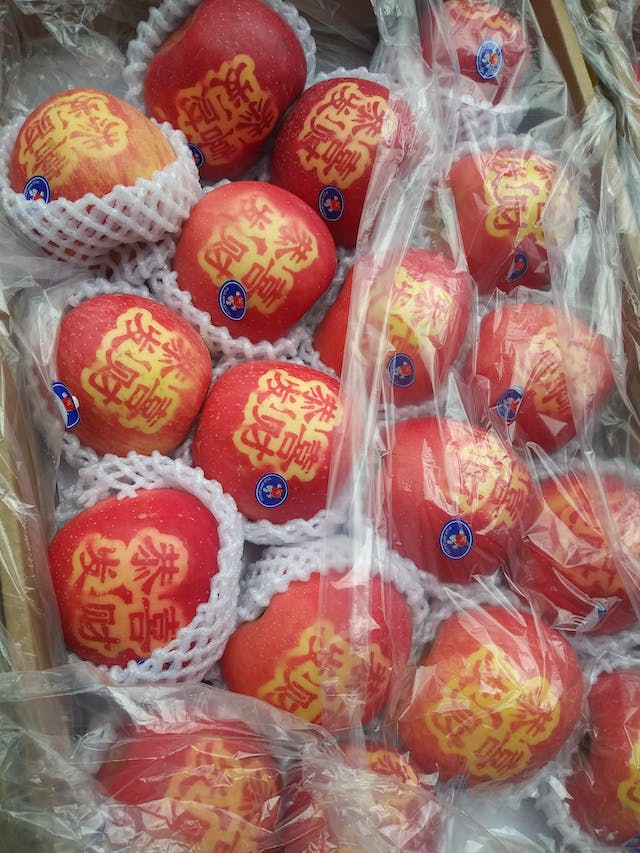
Image credit: Milena DeLaurentiis via Pexels
The Golden Fruit Tray, filled with a variety of fruits symbolizing luck and prosperity, is a staple decoration during Chinese New Year in Filipino-Chinese households. Each fruit holds significant meaning – with oranges representing wealth, apples symbolizing peace, and grapes signifying fertility.
While the fruits remain traditional, the presentation of the Golden Fruit Tray has become more elaborate. As we keep up with the times, you’ll find stylish and artsy tray arrangements.
6. Firecrackers and fireworks – light show to keep the bad spirits away

Image credit: Jared Berg via Unsplash
What’s a New Year celebration without firecrackers and fireworks, right? Of course, these elements are also essential to Chinese New Year celebrations and with special meanings too. Firecrackers and fireworks are believed to ward off evil spirits and bring good luck. In the Philippines, communities come alive with deafening sounds and colorful displays of fireworks, creating a festive atmosphere that lights up the night sky. You’ll see the Manila skyline full of fireworks that make such a beautiful sight.
Despite some safety concerns, the tradition of setting off firecrackers and fireworks continues to be a cherished part of Filipino-Chinese New Year celebrations.
7. Reunion dinner – abundance feast with the family
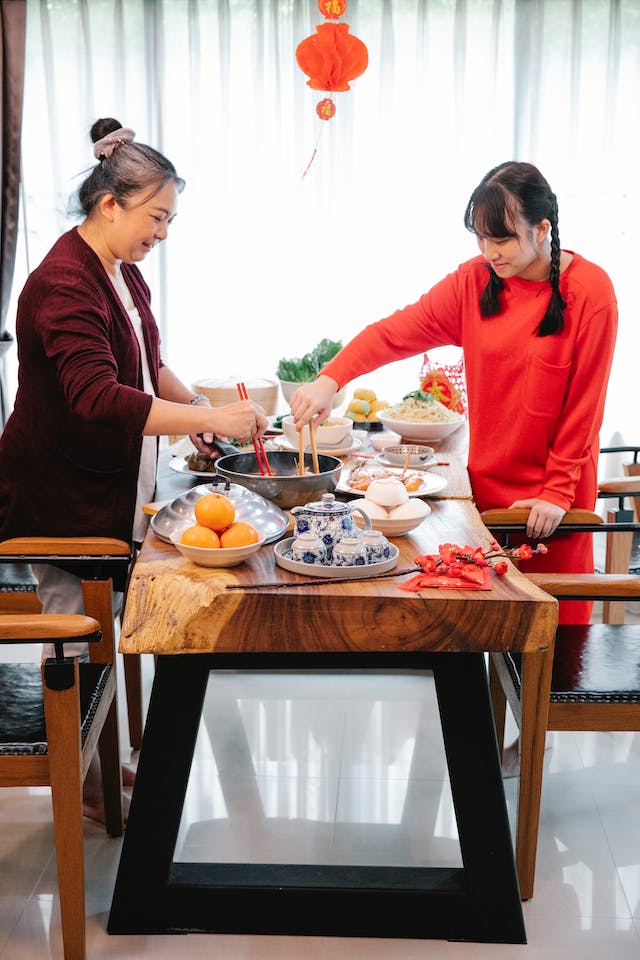
Image credit: Angela Roma via Pexels
The Reunion Dinner, held on Chinese New Year’s Eve, is a time for families to come together and share a festive meal that symbolizes abundance and togetherness. You’ll find traditional dishes such as fish, dumplings, and noodles for long life on the table spread, each dish representing prosperity and longevity.
While keeping the essence of the reunion dinner, modern Filipino-Chinese families incorporate contemporary dishes and dining experiences for a fun and exciting twist into the celebration.
8. New Year markets – from good luck charms to Chinese snacks
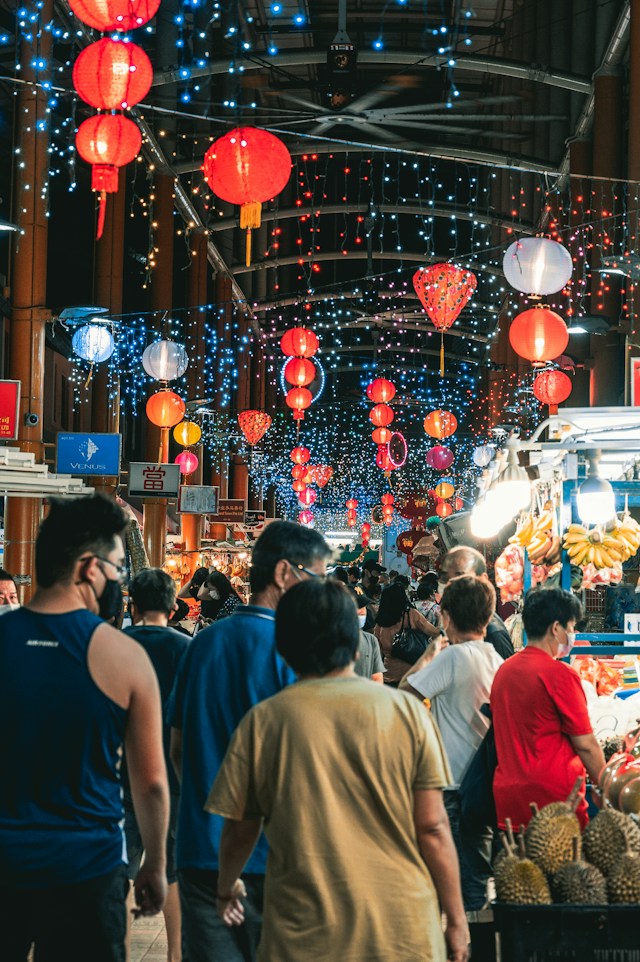
Image credit: @Jeyakumaran Mayooresan via Unsplash
New Year Markets, or tiangge, are bustling bazaars that come out during Chinese New Year. These days, you’ll find them in malls around the Philippines, offering a wide range of festive goods, decorations, and traditional delicacies. If you’re looking for lucky charms or lantern decorations, these markets provide treasures of good luck symbols. So whether you’re seeking to immerse yourself in the spirit of the season, or plain curious, you can walk through Chinese New Year bazaars and see the vibrance and meaning of this season.
Chinese New Year traditions in the Philippines you need to know
As we celebrate the longstanding fusion of Filipino and Chinese cultures during Chinese New Year, these Chinese New Year traditions are great reminders of how rich and diverse our heritage is. During the festivities, we get to honor our ancestors and foster a deeper sense of community and connection. While being enthusiastic and respectful, let’s keep the good vibes going and the evil spirits away.
If you’re looking for Filipino-Chinese culinary fusion, check out this list of Chinese restaurants in Metro Manila, or take advantage of these Chinese New Year promos, from dining to gift hampers. On the other hand, take a peep at how Cebuano celebrates the Sinulog Festival.
Cover image adapted from: SJ via Unsplash, @chinagoldtikoy via Instagram, Jared Berg via Unsplash
